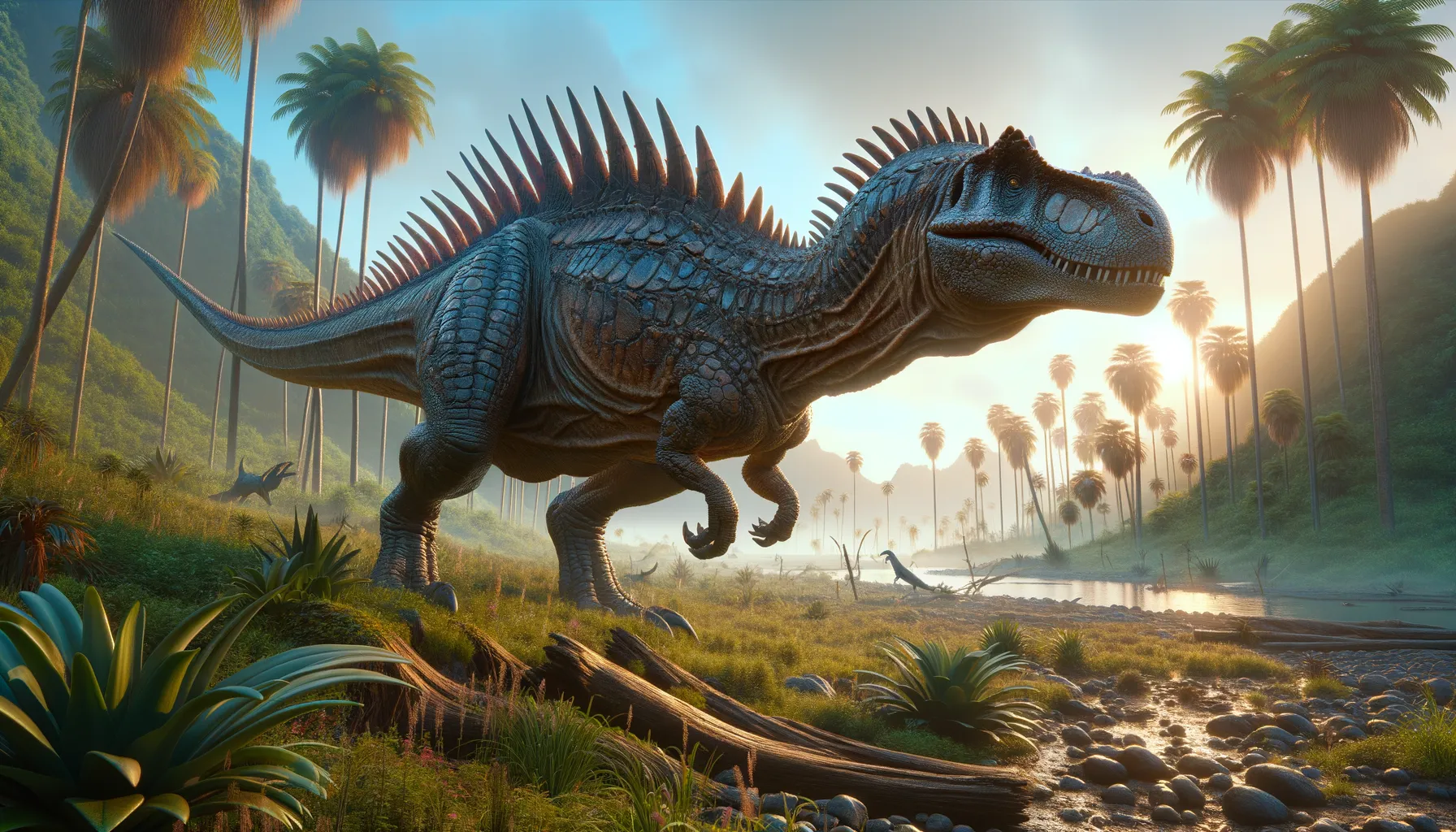
Sarcolestes
A slow tank of the dinosaur world.
Period
Jurassic
Length
Approximately 13 feet long.
Height
Stood about 5 feet tall.
Weight
Estimated to weigh around 1 ton.
Sarcolestes was an armored dinosaur known for its thick, bony plates. This early ankylosaur roamed the Earth during the Middle Jurassic. It was herbivorous, feasting on low-lying plants, and had a small, boxy skull. Although it had defensive features, like many related species, it mostly relied on its strong body armor as protection against predators.
Diet
Sarcolestes was an herbivore, primarily feeding on low-lying ferns and other vegetation. Its teeth were suited for grinding tough plant material, indicating it required a large intake of food to maintain its energy.
Hunting
As a herbivore, Sarcolestes did not hunt for food. Instead, it grazed on plants, often using its small, beak-like mouth to nibble on vegetation. Its slow movement and heavy armor provided protection rather than predation capabilities.
Environmental challenges
Sarcolestes faced challenges from predators, which it warded off with its armored body. It lived in an environment that could be prone to changes in vegetation, affecting food availability. Climate fluctuations might have required migration to more fertile areas to find ample food sources.
Speed
Likely moved slowly due to its bulky build.
Lifespan
Estimated to live around 20 to 30 years.
First discovery
Discovered in England in the early 20th century.
Fun Facts
- Sarcolestes means 'flesh robber' because it was initially thought to be a carnivore.
- It lived during the Middle Jurassic period, approximately 166 million years ago.
- Sarcolestes was discovered in England.
- The only known fossil of Sarcolestes is part of its jaw and some teeth.
- It was initially believed to be related to predatory dinosaurs but is now thought to be more closely related to the herbivorous ankylosaurids.
- Sarcolestes had strong teeth which might have been used for eating tough vegetation.
- Despite limited fossil evidence, Sarcolestes provides valuable insight into the diversity of dinosaurs in the Jurassic period.
Growth and Development
Like many dinosaurs, Sarcolestes likely hatched from eggs and underwent growth stages marked by a period of rapid development. Being heavily armored from a young age, its defensive attributes improved as it matured. The growth rate could vary depending on environmental conditions and food availability.
Habitat
Sarcolestes inhabited regions with abundant plant life, such as lush forests and fertile plains. Its environment supported a diversity of plant species, providing a constant food supply for a herbivore lifestyle. It might have migrated seasonally to areas with better food resources.
Interaction with other species
Sarcolestes coexisted with both herbivorous and carnivorous dinosaurs. While it avoided confrontation, its armored body discouraged predators from attempting attacks. It likely shared environments with similar herbivores, which meant competition for food was minimal.
Natural lifespan
Sarcolestes had a natural lifespan of about 20-30 years.
Reproduction
Reproduction likely involved laying eggs in nests protected by vegetation and soil. Parental care might have been minimal, but hatching in a secure environment increased offspring survival rates. Prioritizing safe locations for egg-laying reduced risks from environmental dangers.
Social behaviour
Sarcolestes might have displayed some social behaviors, such as traveling in small groups to stay protected. Group living afforded increased vigilance against predators and facilitated finding food. Despite their social tendencies, dominant individuals may have established hierarchies within groups.
Fossil locations
Fossil evidence of Sarcolestes has been primarily found in England. These findings provide insight into the distribution and prevalence of armored dinosaurs during the Jurassic period.
